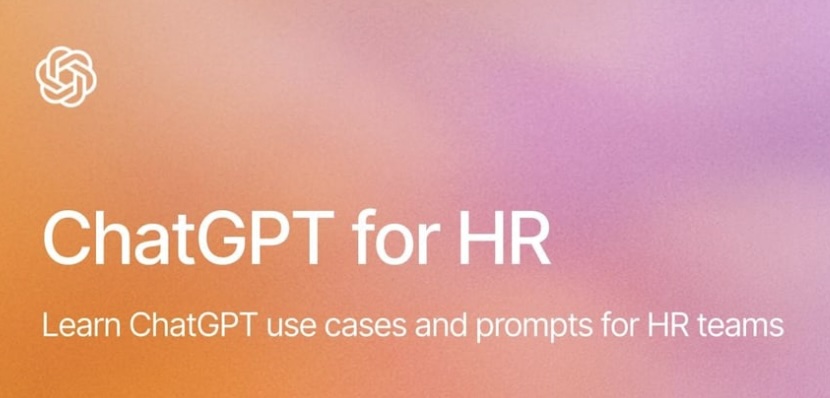- Job Description Process Improvement: How One Workflow Fix Saved 1,200 JDs from Chaos - December 4, 2025
- Affordable Job Description Management Software (That Still Do the Job Right) - November 19, 2025
- AI is Flooding Your Jobs With Unqualified Applicants (We’re Still Figuring Out How to Fix It) - November 18, 2025
I love a good shortcut. And the new ChatGPT for HR resource from OpenAI? That’s a treasure map for HR pros looking to get more done with less time.
It’s got solid prompts for onboarding, performance reviews, and even DEI support. But you know what’s missing? A scalable game plan for job descriptions.
Why Job Descriptions Aren’t Great (Even with ChatGPT)

Let’s be real: job descriptions are often an afterthought. Someone copies a JD from 2017, swaps a few words, and hits publish. Then they wonder why no one great applies. Generative AI tools like ChatGPT are a huge help, but they’re not magic by themselves. Without guidance, ChatGPT might write something that sounds good but says nothing.
The OpenAI resource shows how to get ChatGPT to do the heavy lifting for HR. But prompts like “Create a job posting for a data analyst” still give you the same vanilla JDs you’d find anywhere. That’s where Ongig comes in. It’s like pairing your new sports car (ChatGPT) with a navigation system (Ongig) that keeps you out of traffic.
ChatGPT + Ongig = HR Superpowers
Here’s how it works:
- Speed up drafting with ChatGPT. Use it to get a rough version based on the title or responsibilities. The OpenAI guide has prompt examples to get you started. Like “Based on this information [insert job responsibilities, skills, team context], write a professional job description for a [job title]. Include a short intro, responsibilities, required qualifications, and what makes the role appealing.”
- Refine and optimize with Ongig. Ongig’s software takes your draft and gives it superpowers by using candidate-friendly language and improving structure based on real candidate behavior.
- Stay consistent and compliant. ChatGPT can help generate ideas, but Ongig ensures every JD meets your legal, compliance, and readability standards across departments.
Detailed Use Cases for ChatGPT for HR Professionals
Workspace Experience and Feedback
- Draft employee surveys: Write targeted questions on topics like trust, balance, and inclusion.
- Generate performance review prompts: Help managers spark meaningful feedback and planning.
- Analyze exit survey themes: Spot patterns and capture real quotes.
- Understand attrition trends: Find insights by department, tenure, or reason for leaving.
- Build compensation reports: Summarize gaps and pay equity using internal and benchmark data.
HR Research & Compliance
- Track global HR laws: Stay ahead of changes in classification, privacy, and hybrid policies.
- Benchmark DEI budgets: Know what similar orgs are spending on people and programs.
- Spot HR tech trends: Use AI to brief leadership on what’s next for 2025.
- Compare retention strategies: Borrow what works from industries like healthcare and finance.
- Evaluate recruiting tools: Assess vendors for sourcing, screening, and compliance status.
Talent Acquisition & Engagement
- Create interview questions: Align them with values, technical skills, and role fit.
- Write JD drafts: Generate first versions using team-provided context and skills.
- Brainstorm engagement ideas: Improve morale with resource-conscious suggestions.
- Write internal recognition: Draft appreciation messages for email, Slack, or newsletters.
- Design DEI workshops: Build one-hour sessions with objectives and discussion prompts.
Policy & Program Development
- Summarize internal policies: Convert policy docs into short, digestible content.
- Write RTO FAQs: Clarify key concerns with warm, direct communication.
- Plan onboarding: Build week-by-week schedules with key people, tools, and touchpoints.
- Suggest wellbeing programs: Recommend cost-aware initiatives based on feedback.
- Roll out compliance training: Plan by team, region, and message sequence.
Internal Comms & Visuals
- Design onboarding visuals: Request banners and welcome images that reflect your brand.
- Build DEI posters: Ask for layouts with inclusive colors and themes.
- Illustrate policies: Create friendly visuals for hybrid work and employee lifecycle diagrams.
So Where Does Ongig Fit In?
All of the above are powerful. But many HR pros still struggle to bring it together, especially when it comes to job descriptions. That’s where Ongig takes over. We make sure your drafts don’t just look good ,they perform.
HR Pros: Use ChatGPT for Lift, Not Finish
If you’re experimenting with ChatGPT for HR, awesome. Just don’t stop at the first draft. Think of it like building a playlist. ChatGPT adds songs fast, but Ongig helps you curate the mix so it actually sounds good together.
In short, ChatGPT is the new intern. Ongig is your trusted editor. Put them together, and you’re unstoppable.
Why I Wrote This
We’re always looking for ways to help HR teams work smarter, not harder. OpenAI’s ChatGPT prompts for HR resource is a great start, and Ongig makes it even better. If job descriptions are still a thorn in your side, let’s fix that. See Ongig in action.
FAQs
- Can ChatGPT help with writing job descriptions? Yes, but it often needs refining. Ongig helps with structure, bias-removal, and brand consistency.
- What are some good ChatGPT prompts for HR professionals? OpenAI’s guide is a great start. Try prompts like “Write a JD for [role] that’s inclusive and concise.”
- How does Ongig work with ChatGPT? You can draft in ChatGPT and polish it with Ongig’s tools for tone, DEI, and formatting.
- What makes Ongig different from just using AI alone? Ongig adds the context and compliance layer that ChatGPT lacks.
- Do I need both ChatGPT and Ongig? Not necessarily — but if you’re using ChatGPT already, Ongig will make your outputs way more effective.
